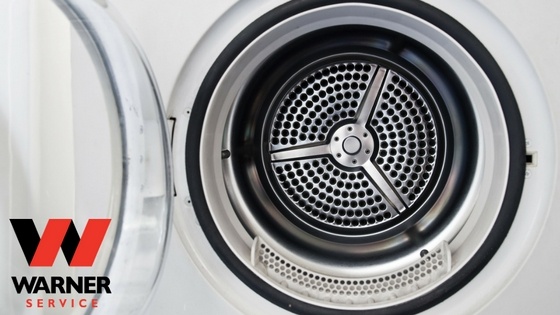
Like all appliances, washing machines need a good, thorough cleaning every month (or more frequently, depending on how often you do laundry) in order to perform optimally. Whether the machine is top loading or front-loading, a high-efficiency (HE) or traditional model, homeowners should know a few tricks in order to keep it in tip-top shape. Here is Warner Service list to get you started:
- Remove the load of laundry directly after a cycle is finished. This will prevent a musty odor, mold, and mildew from developing in the washtub and on the drum, which can subsequently transfer to the clothes and linens.
- Remember to clean the exterior of the washing machine with a soft, damp cloth to wipe up detergent or softener spills, lint, dust, and more. However, you should avoid abrasive cleaners or solvents, which can scratch and damage the surface.
- To remove soap scum, use 3 to 4 cups of distilled white vinegar or apple cider vinegar. Add the vinegar to an empty load, and run it with hot water. Do not add detergent, so the acidity can remove lime scale and residue from the basket.
- Check that the washer is on firm footing to eliminate excessive vibrations.
- Clean out any water or remaining fabric softener from the dispenser drawers using an old toothbrush or Q-tips and dishwashing liquid. For help on how to do this, check the washer’s manual.
- Better yet, forgo or use less fabric softener and bleach, especially if you have an HE machine, which already requires less laundry products for green laundry.
- If you have an HE washer, use only HE detergent. Regular hypoallergenic laundry detergents produce more suds, which can build up a film on the drum and hoses that become a breeding ground for mold.
- Do not overload the machine. This can damage the washer and garments. Check the washer’s manual for exact amounts per cycle.
- Ensure that the spin speed selected is appropriate for the load you are washing. A faster spin means less dry time but also extra wear and tear on the machine’s parts, which can shorten its lifespan.
- After each use, lift the lid or keep the door slightly ajar to allow air to circulate and dry out any remaining moisture.
- If you have a front-loading washer, wipe down the rubber gasket after each load. This is especially helpful if you have pets (or kids) that shed a lot.
- Vacuum out any pet hair from the laundry drum.
- Call a professional to clean out the inlet hose filters. These components help keep minerals and debris in the water from getting inside the machine.
- Clean the drain pump filter every few weeks. This will decrease the likelihood of water drainage, wet clothes, longer cycle times, and unusual pauses.
- Inspect the washer’s hoses for tight fittings, bulges, cracks, and leaks. These bursts could lead to gallons of water flooding your home.
- Run a cleaning cycle Newer machines have specific cleaning cycles that help eliminate any odors or pathogenic spores that have developed. If the washer does not come with a special cycle, run a normal cycle with hot water and specialty cleaner like Affresh, Tide Washing Machine Cleaner, Clorox Washing Machine Cleaner, OxiClean Washing Machine Cleaner, Smelly Washing Machine Cleaner, or Lemi Shine Machine Cleaner Plus Wipes (which is also great for garbage disposals).
If the washer smells worse than your sweatiest gym gear or dirtiest kitchen towel, it is time for a fresh sanitation cycle using our tried-and-true tips. For more information on how to keep the washing machine clean, click below to download Warner Service’s directions and organic ingredients list for green laundry:


